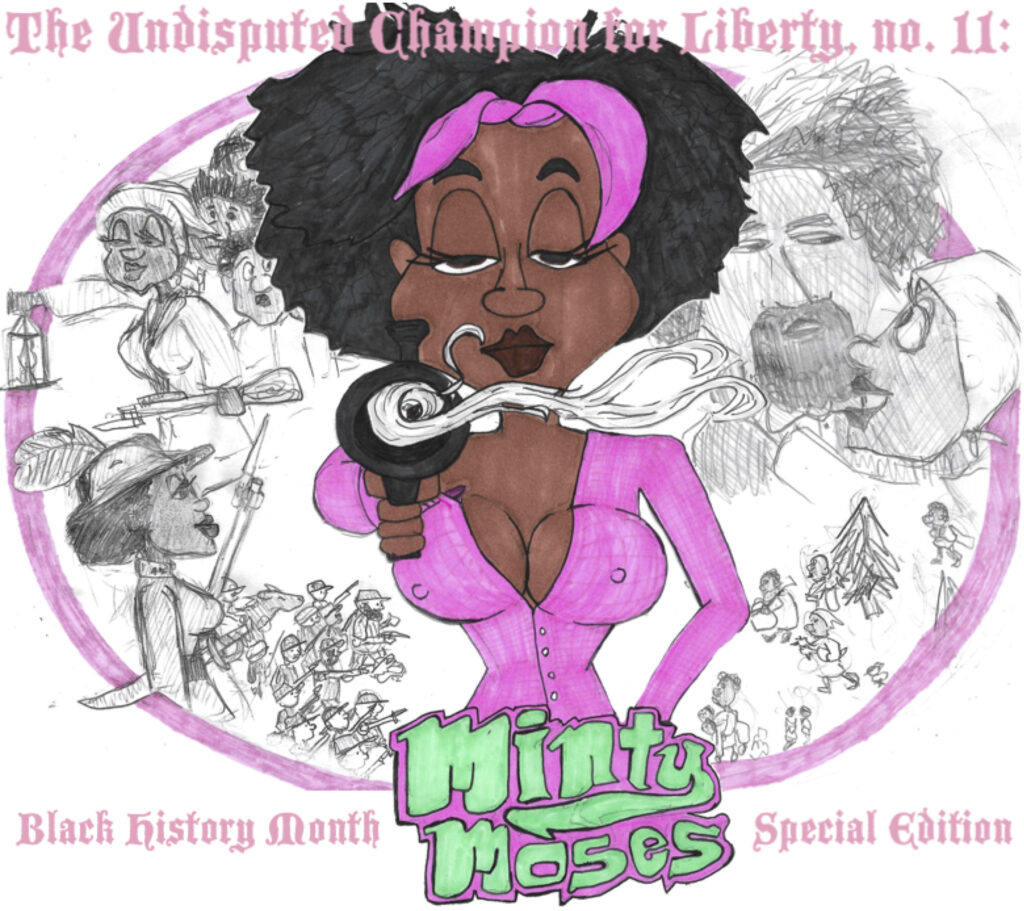
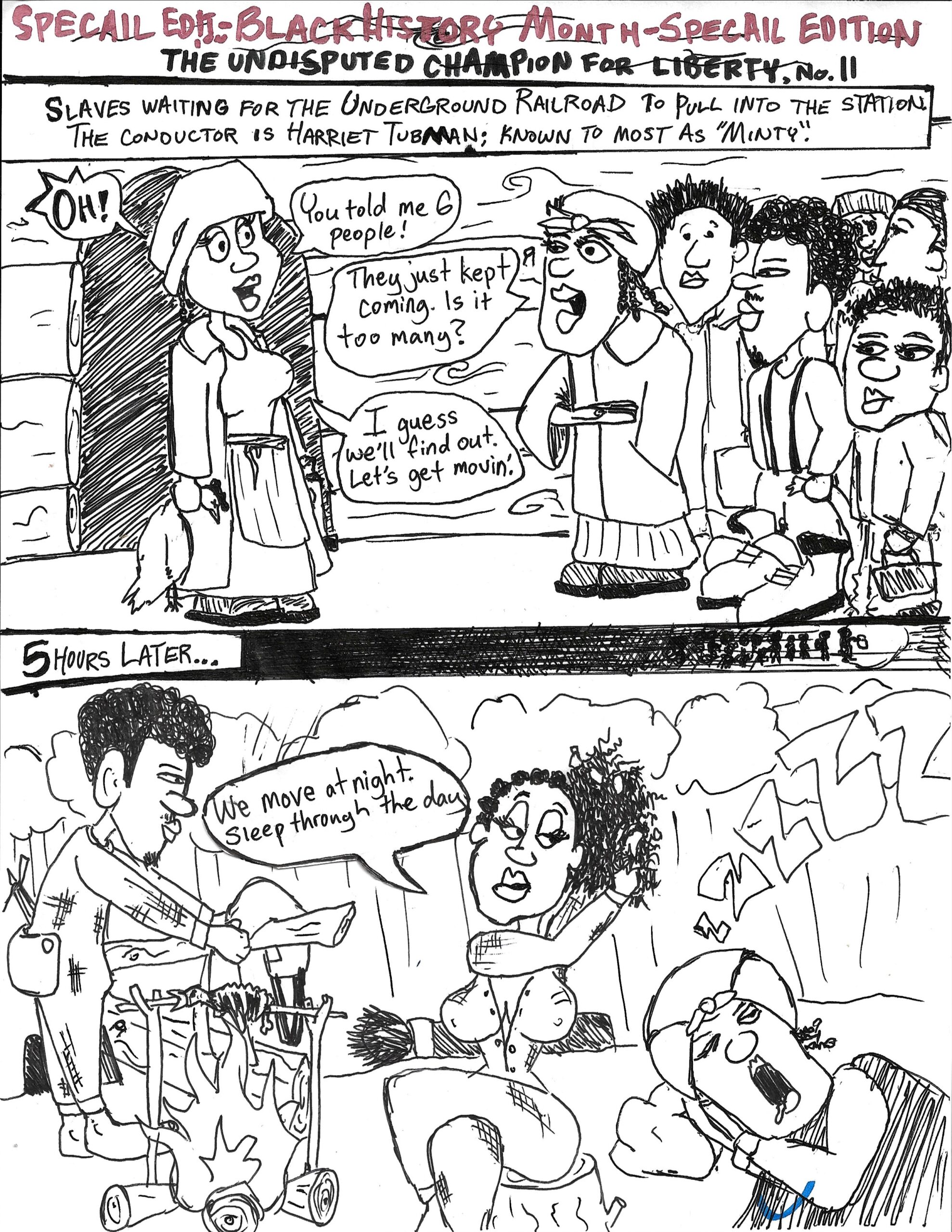
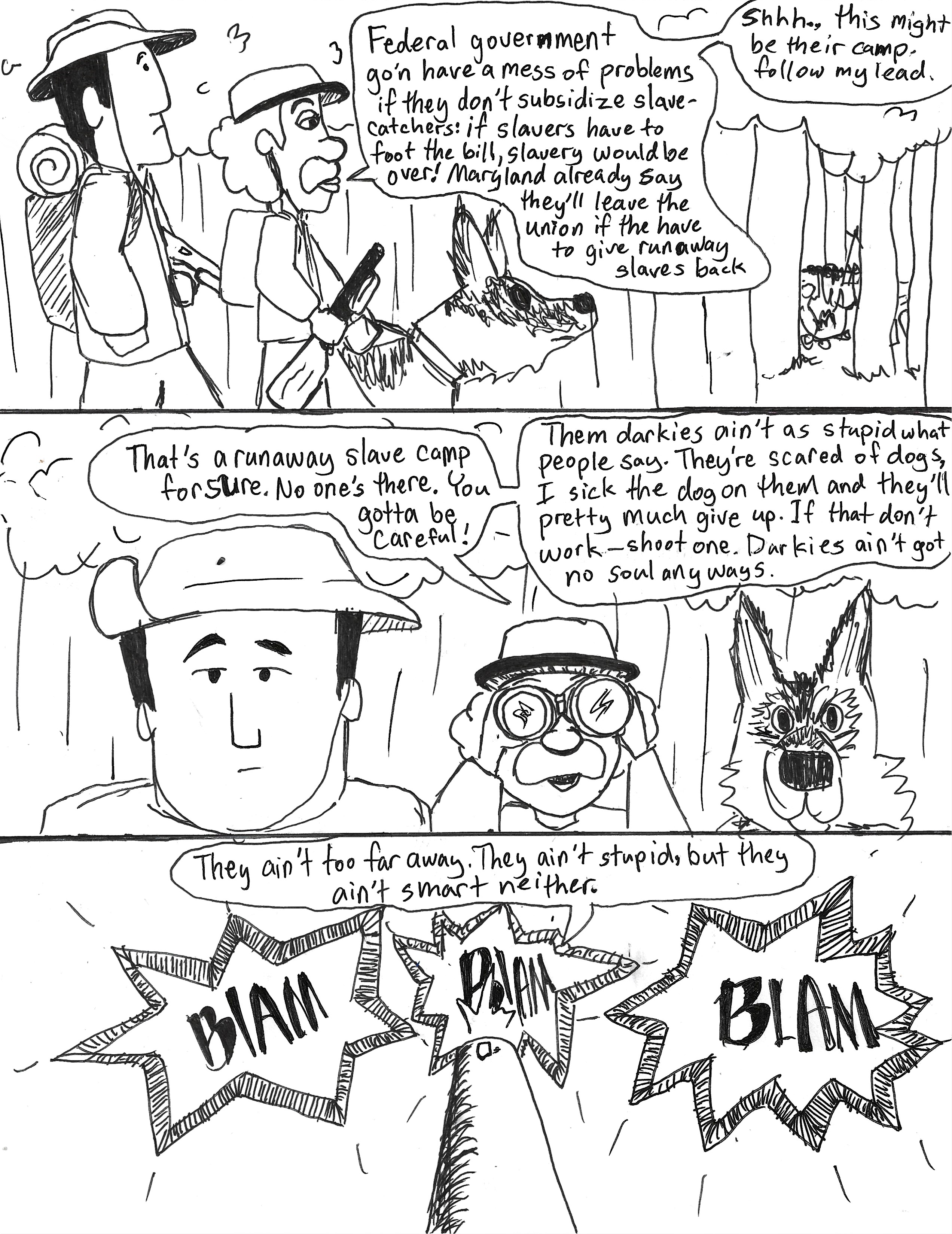
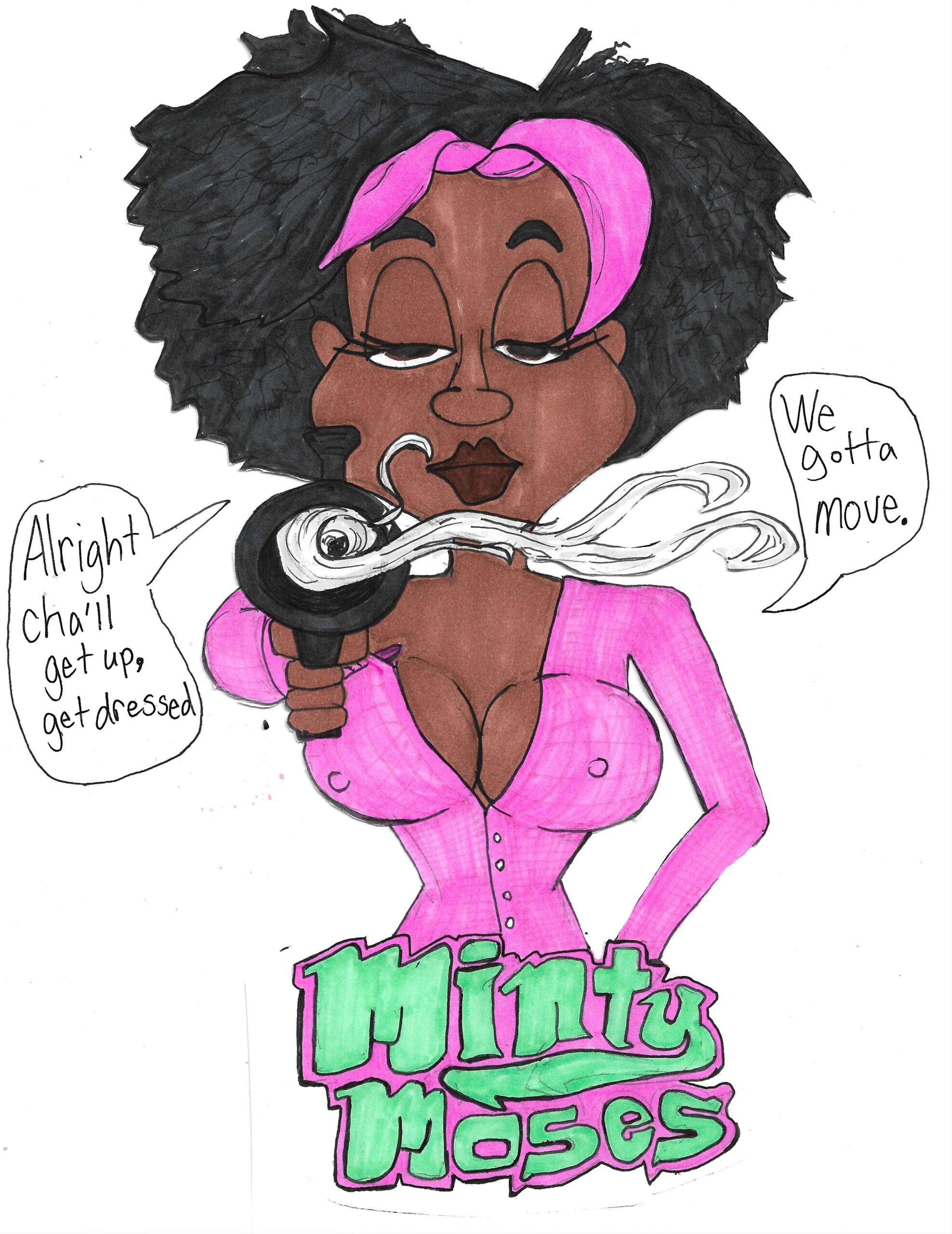
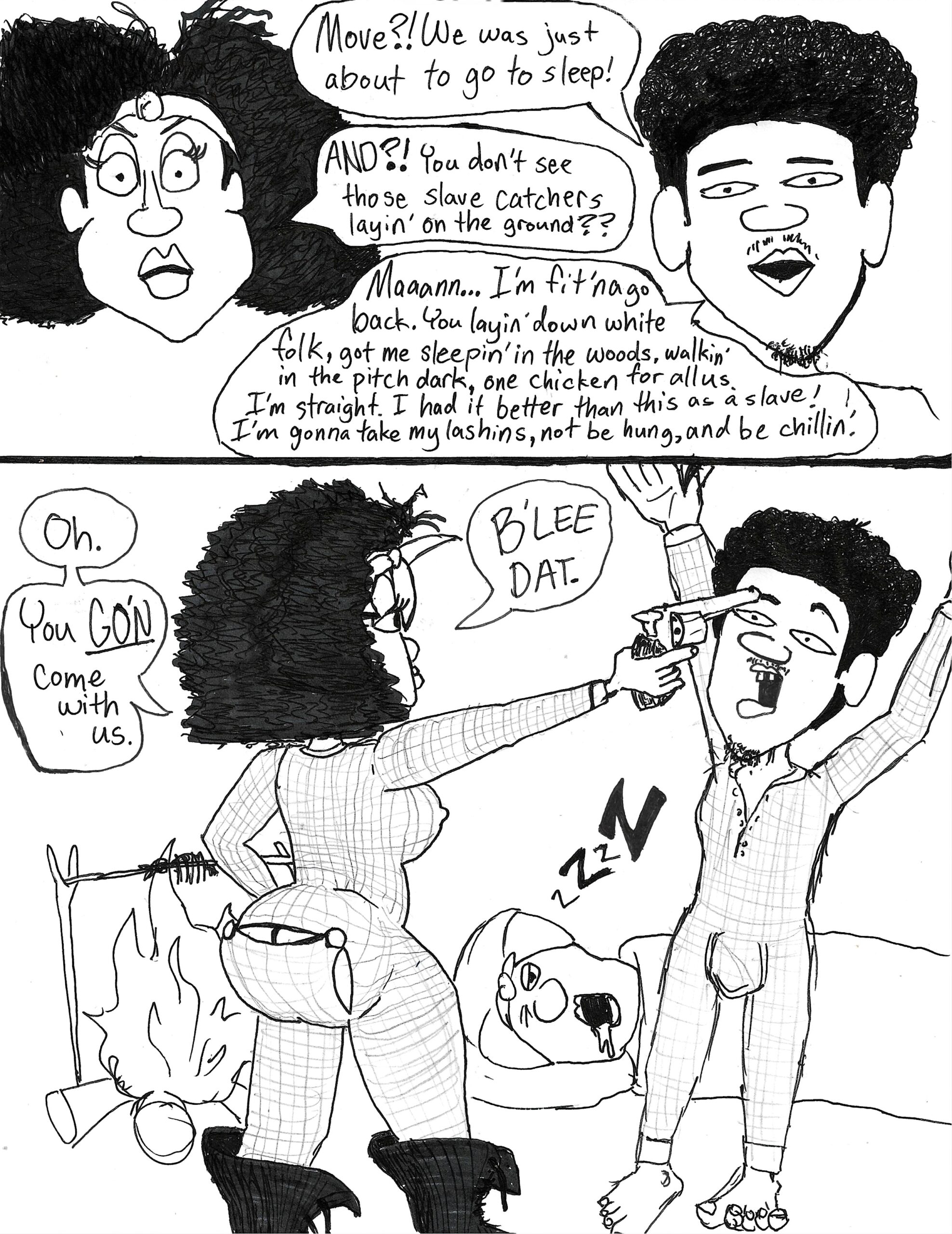
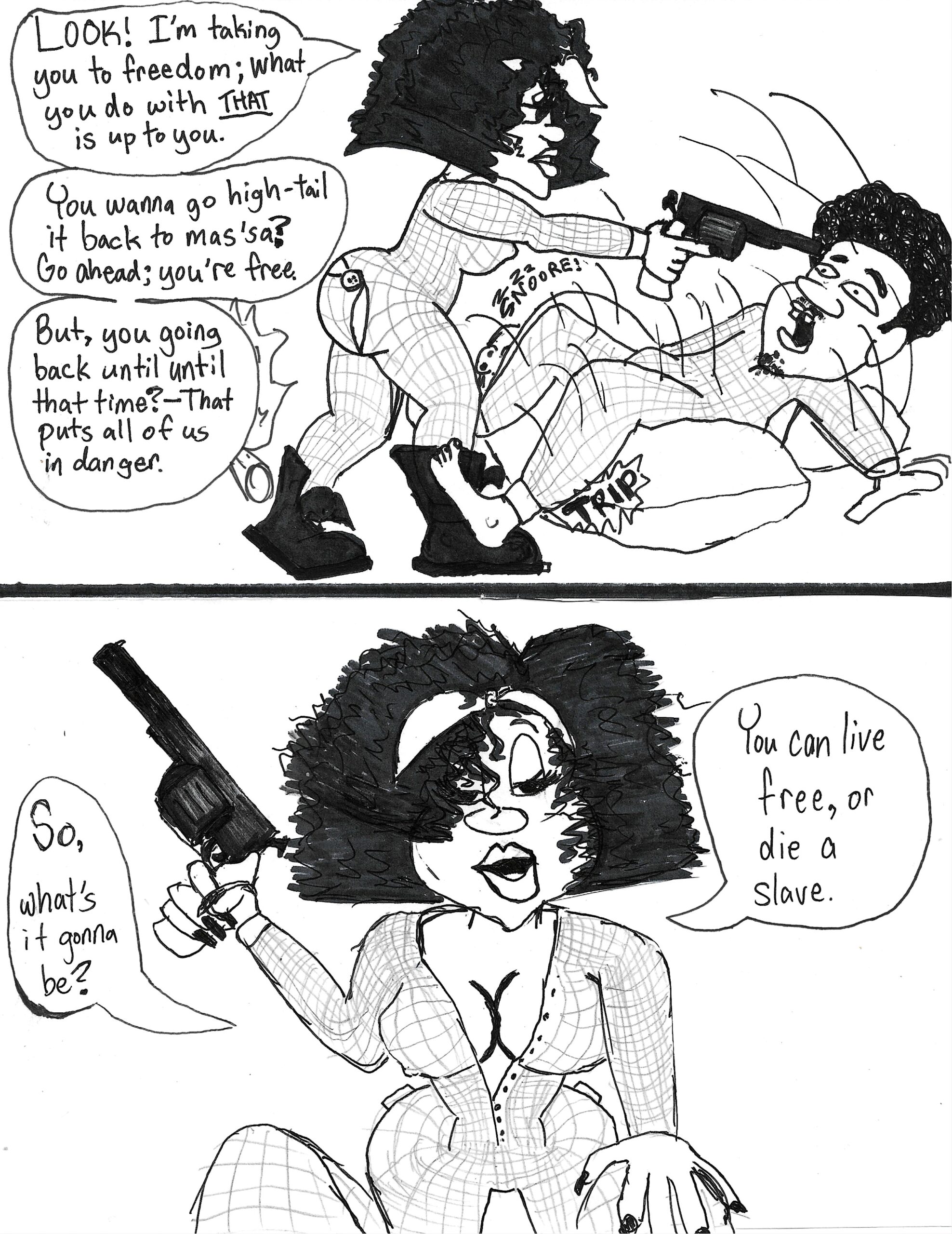
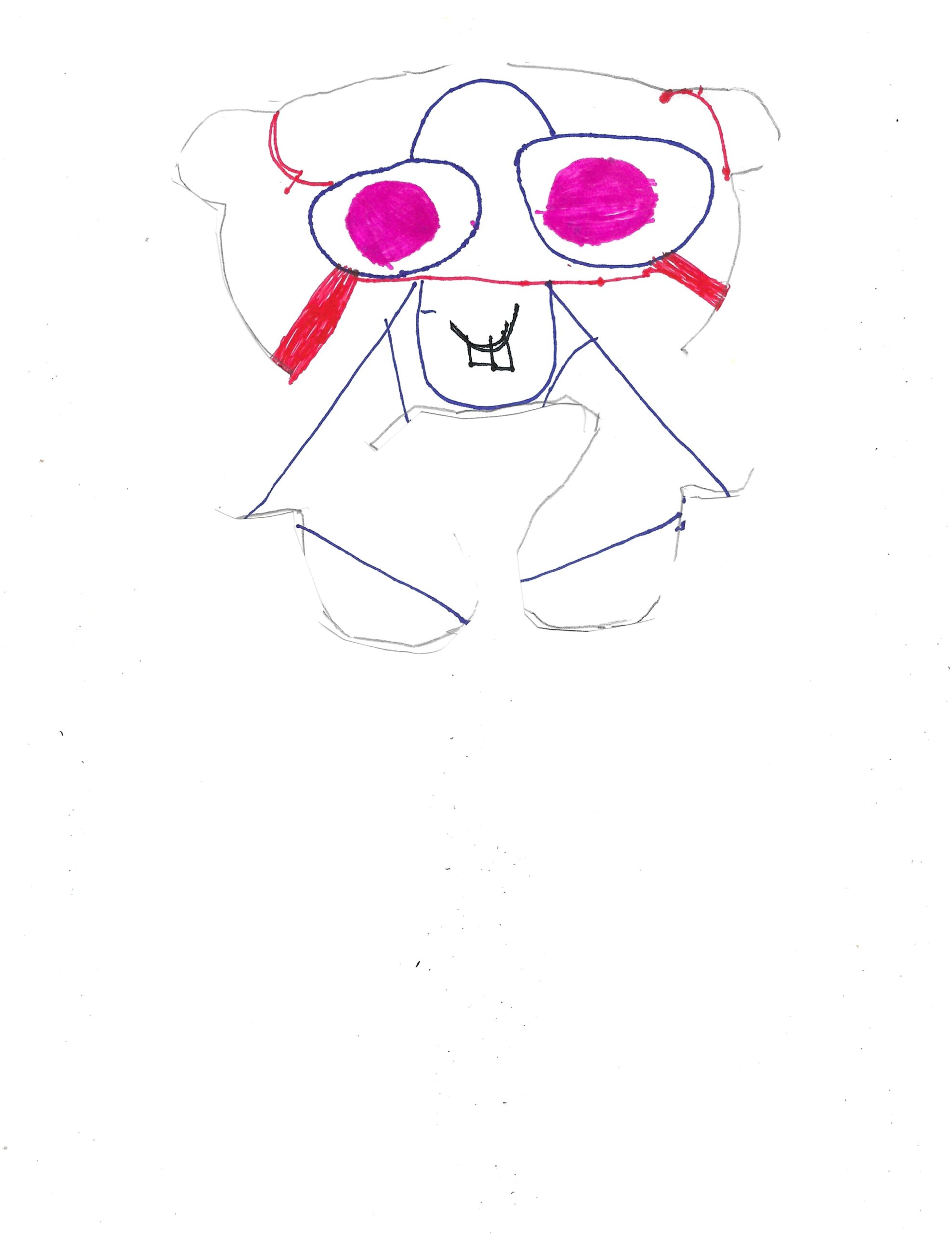
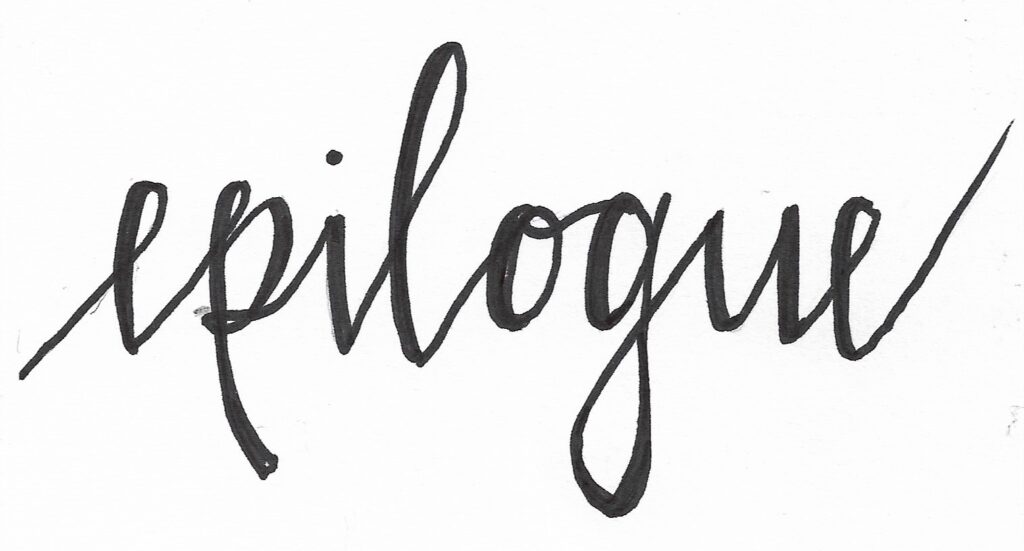
It is now April, so this Black History Month Special Edition is right on time, per usual! (“Per usual” is not an appropriated CPT joke, in case anyone is wondering, it is to say my work is usually late.) However, Black history doesn’t have to be relegated to a specific month, that’s something honkies made up. I went to Catholic School, and we didn’t have Martin Luther King Day off of school, nor did we have Black History Month (BHM)— at least not that I recall. We did talk about Harriet Tubman, though, along with every other school I went to too. “The Underground Railroad”, it’s almost as mind-numbing as certain stories about Christ, George Washington, MLK, and other famous people taught ad nauseum since the day one starts school[1]. “Okay children, we’re going to talk about the American Revolution,” the entire class rolls their eyes and thinks: “Declaration of Independence, King George, 1776, blah blah blah… Paul Revere, ‘the British are coming! The British are coming!’.” Who was Paul Revere? Where were the British coming from? This is a perfect example, everyone knows this story, I’d say one in five could put it into context.[2] At least that’s how I remember it. So, when my daughter came home showing a picture she drew of Harriet Tubman for BHM, I complimented her drawing but asked, “Why’d you pick Harriet Tubman?” She was already able to recite the indoctrinated clauses (second grade) “She saved slaves via the Underground Railroad.” I’m like, “Why didn’t you pick Nat Turner, Huey P. Newton, or even Malcom X?” because they are some of my personal heroes, which I assume are not on any type of list to report on (excepting Malcolm maybe).
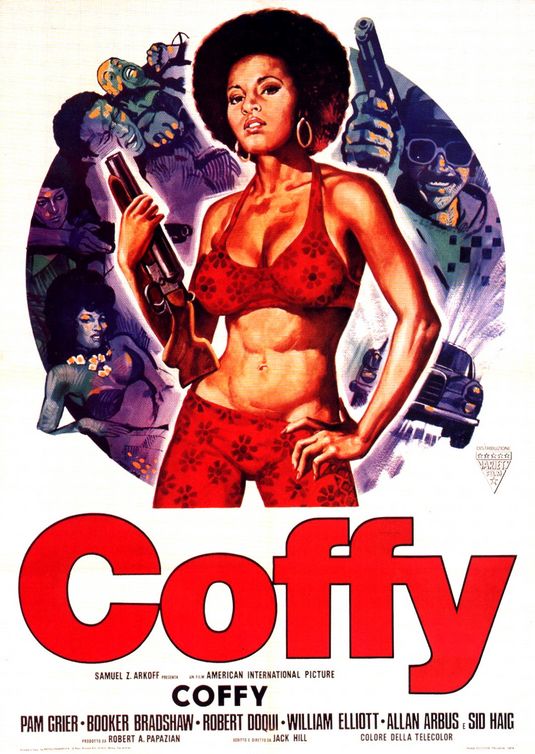
She couldn’t answer any of my questions. I naturally did what every astute and highly intelligent scholar does and turned to Wikipedia. A fresh look at Harriet Tubman[3] blew my hair so far back, I was looking like Don King when I was done. I kept picturing Pam Grier in the blaxploitation vigilante flicks (e.g., Foxy Brown, Coffy, Black Mama, White Mama, etc.). I’m not particularly fond of the term “blaxploitation” and many of them are my favorite movies within the genre they are meant to exploit, but it does seem to depict a certain type of movie and this is the proper term, whether I like it or not. Regardless of cinema categorization, I found it a travesty that there was no such work portraying Harriet Tubman existing in the world; therefore, I immediately began drawing. I based the cover on a movie poster from Coffy (pictured above[4]). I regret not giving her an afro; I wanted to do hair like actress Cecilia Lion (pictured below[5]) because she’s hot and I wanted to do the bandana tied in the front, which created a problem artistically with Pam Grier’s iconic afro that I didn’t want to deal with. Which, I did a terrible job with. I just wanted her to be in her underwear to be provocative on the cover, and Tubman is always modestly dressed in depictions and probably in real life also because one of her talents was blending in (also, women just did not dress that way back then). Hence, the illustrations show her (and her accomplices) getting ready to sleep and Tubman taking out her braids. It was then that the comical opportunity burst from my memory of the time period: The “union suit”[6]. Yes, the iconic butt flap long john jammies. Which, unlike the hair, it turned out perfect. (More about the artistic licensure of gun depiction later…)

Facts:
Despite being the facts being tedious, there are some I should review for the purposes of discussion, and some of the myths[7] developed surrounding this American legend that are less well-known. Born Araminta Ross, known as Minty, she took her husband’s (John Tubman) name in matrimony; she also took her mother’s name sometime thereafter, but the reasoning has been lost to history.[8] She became known as “Moses” for reasons so obvious I am annoyed just writing this. I went with Minty Moses for the title. The thing that most impressed me, however, was her not so famous time in the Civil War. She worked as a nurse, but also espionage and was even the first woman to lead an armed battalion into war! Had some choice words for “Master Lincoln” as well; although, she obviously supported the Union in the war. There will be more about that in the next BHM Special Edition (dropping in April or May of next year) which will chronicle her exploits in the Civil War, specifically the Raid on Combahee Ferry, titled Dirty Harriet. She retired, worked for women’s suffrage, ran an old folks home, and remarried to a man 22 years younger than her like the boss she was.
Feminism, Pam Grier Style:
“Men’s greatest weakness is their facade of strength, and women’s greatest strength is their facade of weakness.” ― Warren Farrell
An American heroine, the face of the culture of freedom, especially Black freedom, and the O.O.G. Undisputed Champion for Liberty beyond a reasonable doubt, but the effeminate power is somewhat underplayed and is more important today than ever before. There seems to be this transition in the feminist movement from understanding and respecting the female dynamic in the social dichotomy, to an ideology that there is no difference at all between men and women. So many of our heroes use brute force, sheer will, violence, and strategy to reach their goals, and it would seem, with the popularity of feminism, there is a push also to have female characters in our stories fighting, aggressive, and other masculine attributes (the Avengers franchise, opposed to the Alien franchise, for instance) as a show of male domination. This also demeans true feminine strength as it is an admission that the masculine is dominant, and the goal for women to reach. However, women’s power lies within what men can’t do. Women’s strength comes from their perseverance, their ability to endure, intelligence, and cunning which stems from instinctual mechanisms of nurturing and compassion. The heavenly warmth, motherly love, is the ultimate bliss next to death, and with that deep compassion comes the equally ruthless irrational protectionism of Kali.[9] The art of deception, as Sun Tzu said, when your enemy is strong make yourself look weak, when your enemy is weak, make yourself look strong. Tubman mastered all of these attributes and her ability to utilize them in execution of the plan was uncanny.
Packin’ That Toast:
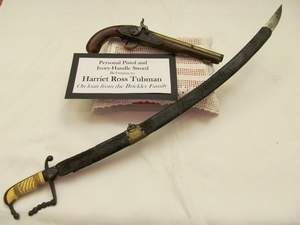
As many of us “2nd Amendment enthusiasts”[10] love pointing out, she was always strapped and ready to rock. Legend has it, she carried a revolver. However, this seemed anachronistic to me; I had to look it up and it was definitely not a revolver (her actual gun is pictured above[11]). My guess is, some liberal who thinks all names for guns are synonymous was trying to be entertaining, and journalists, biographers, and scholars just started using that as reference, but who knows? Even the Wikipedia page states “revolver”. I kept it a revolver, though, for aesthetics and tradition. While trying researching her pistol (and in general research of her), a specific story concerning the burner kept coming up; probably because it shows how bad ass she is. She didn’t only tote it for slave-catchers, but also to let people who got spooked or anxious enough to where they wanted to return home know they can’t get off the train once they get on. It would endanger people and jeopardize the Railroad itself; so, she would pull it on them and say, “You can live free, or die a slave.” Which I wasn’t aware of until I read a Harriet Tubman graphic novel and had to go back and edit the final panel to say it. I decided to use that as the basis for the first issue.
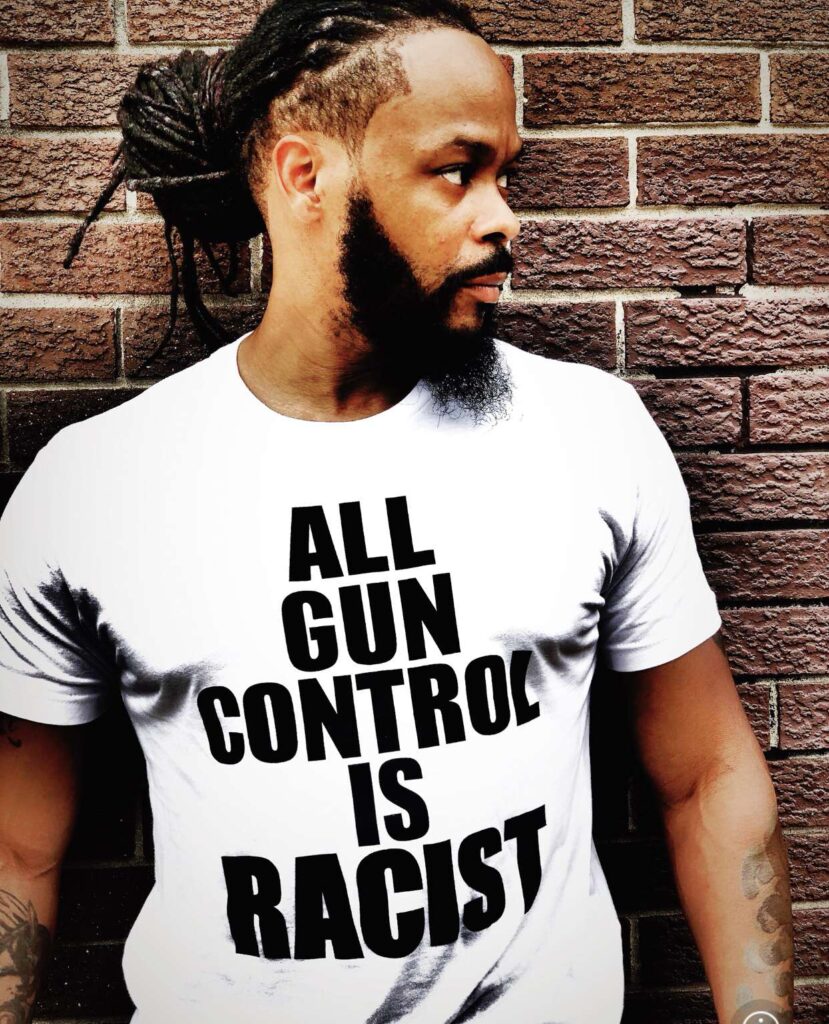
Even though there were many laws preventing Blacks from owning or possessing a firearm, it still serves as a fable for why the 2nd Amendment was enshrined into law. As Maj Toure[12] (pictured above) sporting the statement he is quick to point out, “all gun laws are racist,” even though the state can no longer explicitly prohibit Blacks, the Mulford Act[13] in California (signed into law by Reagan, by the way) was designed to stop the Black Panthers from protecting their community against oppression. Michigan saw its first gun laws after the “Sweet Trial”[14]. The NRA helped arm Black people after the rise of the KKK, militia’s made sure Blacks could vote which the Democrats launched a campaign against them, accusing them of being Republican cronies. Of course, the Democrats opposed these institutions and supported the KKK just as they do now. And look, I know the NRA ain’t got the crispiest record; I was appalled by their absence and preposterous statement in the Philando Castile shooting is sickening[15]; but, if one thinks I’m trying to exonerate or condemn some institution, they’re missing the point.
What is Black on Black crime? Why is this even a statistic? More white people shoot other white peoplemore than Blacks shoot other Blacks; it is the per capita shootings that is way past other races in The U.S.; however, it seems quite clear that people shoot people that they live around. Black on white crime is higher than white on Black crime, but, being that Blacks are a minority and this phenomena typically takes place in urban environments, I don’t think it’s a stretch of the imagination to say that the interracial crime is also based on location. Even if it isn’t, why are these racial disparities pertinent to the conversation? I don’t know, but let us do a thought experiment and see where the logic leads us concerning these stats and questions.
The urban cities, particularly Black communities, are the most violent in the sense the probability of being killed by gun fire is higher than in other places. Let’s be honest with ourselves, the War on Drugs is to be blamed for 50% (and that’s being generous, probably more like 90%) of the discord represented in these communities. It has caused the uprise of black markets and street gangs, leading to broken families, and, thus, perpetuating the environment. A CIA representative, in a town hall, after Iran Contra was exposed, said that they didn’t target Black communities to sell dope to, they just were selling dope to Americans. (Maybe they want gun control so journalists who expose CIA ops in one of the biggest scandals ever, in my opinion, don’t shoot themselves twice in the head.) Regardless of why or what or who, the point is it seems senseless to think the government did not instigate these disparities. This situation has also lead to a mistrust of policing. While all this is going on and people are growing up in this environment, we want to put some kid in a cage for having a pistol in his pocket.
Rich white people, who statistically have a nearly zero percent chance of getting shot, want to take guns away. They have no skin in the game and no melanin in their skin, what business do they have trying to find solutions? Of course, the benevolent government thinks they can solve anything. Let’s assume gun control actually works, how do they plan on enforcing these laws? With police? Who are armed? How has that worked out historically for Black communities? I try to keep things clean in UCL Series, but Meek Mill makes some profound statements on the subject that’s worth quoting at length here. It’s from a song titled “Lil Nigga Snupe”[16], I’ve chosen to use gralix for censorship because I feel his use of the n-word is important to the message he delivers. I’ll end this by leaving you with these words:
“Lil’ Snupe, they killed my lil’ n***a Snupe
My lil’ n***a was the truth
And all he wanted was a coupe, all he wanted was a coupe
So what’s a n***a ‘sposed to do?
Tell ’em put the guns down or tell these lil’ n***az shoot?
‘Cause they’ll do the same to me, do the same shit to you
And all these n***az in my roof, that’s why I got a bulletproof
And as I’m rolling through my city, n***a, all I see is murder
Ain’t nobody seen it but shit everybody heard it
And ain’t nobody hiring so everybody serving
And all this gunfire so everybody murkin’, better get a strap!”
[1]Even her Wikipedia page states there was no serious biography published until 1943, and nothing geared towards adults for another 60 years; adding some objective testimony to my experience.
[2] As of the writing of the text, I am not even sure that is the correct name; it came to me as I was about to quote “Whats-his-name.”
[3] Most of the facts presented came from the Harriet Tubman Wikipedia page, retrieved from https://en.wikipedia.org/wiki/Harriet_Tubman (5/7/2023)
[4] IMP Awards (2008). 1973 movie poster gallery:Coffy picture 3 of 3. Internet Movie Poster Awards. Retrieved from: http://www.impawards.com/1973/coffy_ver3.html (5/7/2023).
[5] Celebfacts.com (2023).. Cecilia Lion. Celebrity Facts: Celebrity Details, Body Statistics & More… Retrieved from: https://www.celebsfacts.com/cecilia-lion/ (5/7/2023)
[6] Lauer, A. (2021). The history of the union suit, the infamous butt-flap long johns: The consummate winter base layer has roots in women’s rights, Original Penguin and the world of high fashion. Inside Hook. Retrieved from:
https://www.insidehook.com/article/menswear/history-union-suit-butt-flap-long-johns/amp (5/7/2023).
[7] “Myths” do not mean “completely fabricated” as it is used in the colloquial sense; the expression of “myth” meaning “factually inaccurate” is a myth.
[8] I haven’t done any real thorough research as of now, I plan to, upon producing a complete biographical graphic novel
[9] The Hindi goddess known to be most benevolent and loving mother, but a savage as it gets donning a necklace of severed heads.
[10] This is, of course, sarcastic as only the gun control advocates would call gun owners this. Gun owners themselves would call it “Tuesday”, so to speak.
[11] This picture was retrieved from Pinterest, posted by Russell Kimmerly, I am not sure how to go about citing it, but her is the link: https://www.pinterest.com/pin/155866837096112683/ , it is Tubman’s gun and sword, but no pics from the museum where they are on display (not without glare anyway).
[12] The founder of “Black Guns Matter”, shown modeling his apparel that can be purchased at https://blackgunsmatter.myshopify.com/collections/all and who I am not affiliated with at all, teaches urban kids about gun law, gun safety, and conflict resolution.
[13] Wikipedia, 5/2023 https://en.wikipedia.org/wiki/Mulford_Act
[14] Wikipedia, 5/2023 https://en.wikipedia.org/wiki/Ossian_Sweet
[15] They said something along the lines of “he was carrying illegally” because he had weed in the car. It does make it seem a little bias, if not racist. Why? Because they are ardent protectors of “…shall not be infringed,” and he was gun downed for no reason at all.
[16] Mill, M. (2013). Track 5: Lil nigga Snupe. Dreamchasers 3.